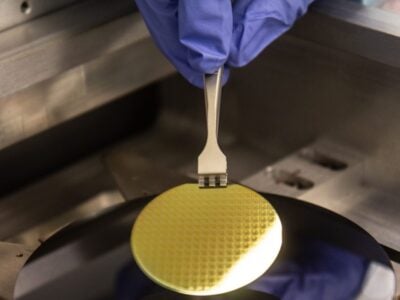
Why contract manufacturing is getting into design
A lot has changed in contract manufacturing over the last ten years, according to Dietmar Guenther executive vice president of operations for Europe, Middle-East and Africa at electronics manufacturing services (EMS) provider Sanmina Corp. (San Jose, Calif.).
“The traditional EMS company focused on manufacturing, bill-of-materials (BoM) optimization and certification meanwhile we are focused beyond pure manufacturing with more design work and technology selection and supply chain management,” Guenther said.
One could argue that the most obvious thing to happen is the rise of one contract manufacturer, Hon Hai Precision Industries otherwise known as Foxconn, to become almost a household name as the manufacturer of consumer electronics for Apple, amongst others.

responsibile for Europe at Sanmina.
“I am not sure that is part of a trend. They are the leading consumer manufacturer with more than 1 million employees but they are an extreme case. Sanmina is differentiated from Foxconn. We don’t do very high volume. We were in PC but we divested that business. We focus on leading-edge technology and go beyond manufacturing in terms of design and after-sales support,” said Guenther.
Sanmina was founded in 1980 in Silicon Valley and has grown organically and by acquisition. It employs approximately 45,000 people worldwide and had revenue of $6.4 billion in its 2016 fiscal year.
Guenther explained that 15 and more years ago a lot of EMS companies grew by acquiring manufacturing assets from their clients who wished to relieve themselves of the capital intensity of manufacturing. That trend has largely washed through the industry. There are still some strategic investments but it also means that EMS companies need to find other places to add value. That can be in design or by lowering cost through increased use of automation in manufacturing, Guenther said.
And with digitalization of so many products there is a lot of design to be done.
Next: The system view
Some companies may prefer to focus on the application software, user interface and the physical form-factor and want somebody else to take care of the hardware details. Engaging with contractor to do this has the advantage of parallelizing and speeding up time to market although it needs careful management to prevent problems surfacing at a late and expensive stage.
“It is a key part of our strategy to do the complete system in such areas a medical, where we find low and medium volume requirements.”
While in general a lot of contract manufacturing of electronic equipment went to the eastern hemisphere to reduce labor costs automation is becoming more important in places such as Asia, China and Mexico, said Guenther. “We still have plants in higher cost regions such as western Europe and North America but we need automation to be cost competitive.”
“That is something that has not changed; customer cost reduction. Whether we make products in Western Europe or in Asia or in China we have to constantly provide cost reduction.”
The complete system approach is exemplified by the Newisys product division which provides servers and data storage for data centers. Although Sanmina does not go as far as building or operating Data Centers on behalf of customers it does integrate server farms and performs functional test, a kind of burn-in process, on behalf of clients before they take receipt of the systems.
Sanmina’s use of a mix of manufacturing locations – it has operations in 25 countries – is used to effect for new product introduction (NPI). “Customers like that we can be a local manufacturer at the beginning of NPI, offering local support for samples and prototyping in the same time zone but we can then move manufacturing to a lower cost region for higher volume.”
Next: 500 engineers
And that support can include designing the product. “We have more than 500 engineers engaged in product redesign or designing from scratch. These engineers are based in India, China and the US – and some in Europe,” Guenther said.
Guenther explained that “design” covers a spectrum of activity from simply selecting or swapping components on the bill of materials at one end to an almost complete product design from a provided specification. It could include redesigning a PCB to accommodate different component selections. “In most cases we do a part of the product but not all. When it comes to chip design – FPGA or ASIC – we don’t do that. If we needed to we would typically sub-contract it out.”
Sanmina is active in the automotive sector making products in China, Europe and Mexico and it is proving fruitful ground as vehicles become more electronic. “Typically we perform PCB assembly for tier-1 customers who in turn supply automotive OEMs. But OEMs also approach us. There is a trend for OEMs to take more technology back in-house and away from the tier-1s. The OEMs are trying to in-source but then they need an EMS partner to get things made,” said Guenther.
The general electronification that is happening across multiple sectors gives Guenther reason for optimism. “When you look at automotive electronification, the Internet of Things, Industry 4.0, you can see that designing and making electronic equipment is going to be a growth industry for many years to come.”
And that will favor EMS companies with design and technology credentials’ a global footprint to support big customers but with a local presence to help brings up smaller new product introductions, said Guenther.
Related links and articles:
News articles:
Raspberry Pi 3 to be produced in Japan
Seagate co-founder sets sights on European manufacturing with UK deal
 If you enjoyed this article, you will like the following ones: don't miss them by subscribing to :
eeNews on Google News
If you enjoyed this article, you will like the following ones: don't miss them by subscribing to :
eeNews on Google News




